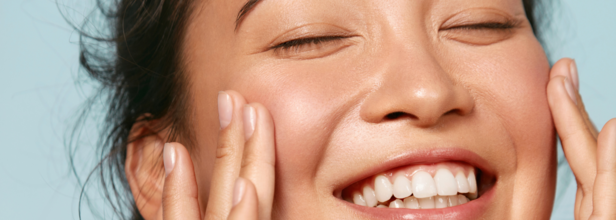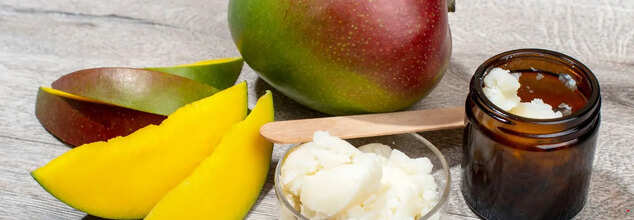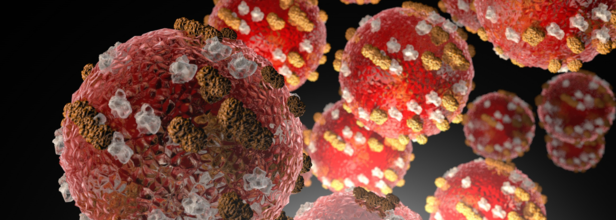
Credits: Canva
What Are Skin Probiotics? Do They Really Work?
Beneath the surface of our skin is a thriving ecosystem of bacteria, fungi, and other microorganisms. This microbiome plays an important role that keeps our skin youthful, resilient, and protects us from harmful pathogens. Studies also show that a well-balanced microbiome can promote wound healing, defend against infections, and even counteract the damaging effects of UV rays.
There has been a growing awareness of the skin microbiome and so many skincare companies are now introducing 'probiotics' for skin.
How Effective Are These?
The idea of using bacteria to improve skin health is not new. It has been there from as early as 1992, when scientists experimented with applying bacteria to treat acne and seborrhea, which is a skin condition that causes itching and flaking. The skincare industry today offers a wide range of probiotic-infused products, from cleansers and serums to moisturizers. All of them promise to rebalance the skin microbiome.
However, a closer look also reveals that many of these products do not actually contain live bacteria. Instead they rely on prebiotics, which are the nutrients that encourage the growth of beneficial bacteria, or postbiotics, which are the byproducts of bacteria that may benefit the skin.
The Challenge of Keeping Bacteria Alive
Why don’t most skincare products contain live probiotics? The answer lies in the difficulty of keeping bacteria alive throughout the manufacturing and storage process. Even if live bacteria make it into a product, there’s no guarantee they will survive long enough to take effect on the skin, where they must compete with millions of existing microbes.
Can Live Bacteria Treat Skin Conditions?
Despite the challenges, some researchers are testing whether live bacteria can treat specific skin conditions like eczema and acne. One promising approach focuses on the relationship between Staphylococcus aureus—a bacterium commonly found on the skin of eczema patients—and beneficial bacteria like Staphylococcus hominis, which can naturally fight off harmful microbes.
A 2021 clinical trial tested a cream containing live S. hominis on eczema patients. After one week, participants saw reduced S. aureus colonization and improvements in redness and itching. A larger phase two trial is now underway to evaluate long-term effectiveness.
Similarly, in a 2018 study, scientists performed microbiome transplants on eczema patients using Roseomonas mucosa bacteria from healthy skin. After 16 weeks, symptoms improved by over 50%.
Can Probiotics Prevent Skin Aging and Cancer?
Beyond treating skin conditions, probiotics may have broader benefits. In animal studies, a strain of Staphylococcus epidermidis was found to produce a compound that protects against UV-induced skin cancer. While human trials are needed, these findings suggest that probiotics could one day play a role in skin cancer prevention.
Some studies also suggest that prebiotics and postbiotics may improve overall skin health. Ingredients like inulin, found in some skincare products, create a favorable environment for beneficial microbes. Additionally, bacteria found in fermented dairy products may help boost ceramide production, which strengthens the skin barrier and improves hydration.

Credit: Canva
This Fruit Butter Can Protect Your Skin From UV Rays
Mango butter—also known as mango oil and mango kernel fat—is a type of oil that is extracted from the kernels of mango seeds. But what is the big deal about mango butter? Well, it is packed with a lot of nutrients that are extremely beneficial for your skin.
How Does Mango Butter Help Skin?
It is generally non-comedogenic. Mango butter does not have compounds that are known to irritate skin, even if yours is sensitive. One exception to this is that if you have acne, you may avoid using mango butter on your face.
Moreover, mango butter also protects from harmful Ultraviolet (UV) Rays. Mango contains salicylic acid and antioxidants, which are known to protect from sun damage.
Most notably, Vitamins C and E are in rich supply in mangoes. A 2012 study suggests that, when combined, these two ingredients may provide some protection for your skin against environmental damage.
There is no heavy scent in mango butter. While you might expect a fruity zing, most people report a mild scent.
It's antibacterial and antimicrobial, which helps clear skin. In a 2020 study, wool treated with mango seed oil was less susceptible to the presence of various types of bacteria.
It may make your hair shiny. The same properties that promote soft skin may also boost your hair's natural shine and reduce scalp dryness and flakiness.
What Is In Mango Butter That Makes It So Special?
Mangoes are loaded with nutritious substances, which is partly why they are a dietary staple around the world. They are packed with fibre, vitamins (C, B6, A, E, and more), and minerals. They are also a good source of folate, potassium, calcium, and beta-carotene.
Many of the vitamins found in mango hold skin-improving powers, so it makes sense to blend it into butter.
ALSO READ: This One “Fattening” Vegetable Could Actually Be A Part Of You Weight Loss Diet
Thanks to its fatty acid profile (it is chock-full of oleic, stearic, and linoleic acids), mango butter is used as a substitute in beauty products for cocoa butter, a long-time skin-softening favourite.
As a topical cream, it can pass along benefits like softer skin, and may offer UV protection. The same 2020 study mentioned above suggests that wool treated with mango seed oil showed a decreased amount of UV damage—so it may do the same for the skin.
Mango butter also performed spectacularly in a small 2008 study on treatments for cracked heels. A mango butter-based solution worked better than a commercially produced lotion regarding the reduction of scars and cracks in the skin and increased shelf life. It also showed similar or better results in its ability to moisturize.
ALSO READ: Is Yerba Mate Nature's Answer To Ozempic? Risks And Benefits

Credit: Canva
Struggling To Sleep? Try These Five-Minute Nighttime Practices To Ease Anxiety
You’re exhausted after a long day. You finally get into bed, hoping for restful sleep—but your mind won’t switch off. Sound familiar?
According to spiritual coach and energy healer Oliver Niño, who works with celebrities like Tony Robbins and Jessica Alba, the issue might not be your bedtime routine or screen time but the stress you've carried into the night.
“Anxiety tends to build up because people carry it on from their day, and they sleep with it,” Niño told *The Post*. “They wake up the next day, and they really aren’t able to get enough sleep. The anxieties of the day before follow them over the next day, and they kind of snowball.”
This is why Niño emphasizes what he calls a “nighttime anxiety detox.” And the busier you are, the more crucial it becomes. “A lot of times, people say, ‘I don’t have time to do much,’” he said. “To me, it’s reversed. The harder it is, the more you have to do it.”
To help his clients—many of whom are pressed for time—Niño focuses on short, effective practices that take five minutes or less. In his new book, Do This Before Bed: Simple 5-Minute Practices That Will Change Your Life, he shares techniques that aim to reset the nervous system and clear emotional clutter before sleep.
Color Therapy
Color therapy, Niño explains, involves visualizing colors as you prepare for sleep. “When you’re going to bed or when you’re meditating and you’re imagining different colors coming down and filling you up,” he said, this practice taps into ancient beliefs that colors carry specific energies and healing properties. He suggests imagining “white coming down from the sky, filling you up,” and experimenting with different colors to find one that brings calm and peace.
Geometric Breathing
Many are familiar with breathwork, but Niño prefers “geometric breathing,” which involves inhaling, holding, and exhaling in equal intervals—typically five seconds each. “While you’re doing that, you’re visualizing—you’re inhaling positive energy, you’re inhaling love and light,” he said. “And when you’re releasing, when you’re exhaling, you’re breathing out every stress, every anxiety, everything that you held onto that day.”
Cord Cutting
When people affect your mood long after they’ve left the room, it could be due to what Niño calls energetic cords. These emotional ties can drain you. “If someone’s affecting me, I probably have what I call an energetic cord attached from them to me,” he explained. To break this, Niño uses visualization: he imagines being filled with light, then visualizes his hands as swords slicing through those cords.
Physical Activity
Whether it's journaling, dancing, or stretching, Niño recommends using movement to release built-up tension. “For some people, they want to go for a night walk, or they want to dance or shake it off or do some yoga,” he said. Other calming activities include salt baths, sound baths, and incense.
Laughter Therapy
Sometimes, a little humor can work wonders. “Some people, they want laughter therapy,” Niño said. Watching a funny video or scrolling through memes can provide that release. “When they’re laughing, anxiety can’t build up.”

Credits: Canva
Could A Covid-19 Tool Help Contain Canada's Measles Outbreak?
Canada is facing its largest measles outbreak in over a decade and health experts have suggested that wastewater surveillance, which is a tool used widely during the COVID-19 pandemic could actually help control the virus.
What Is Wastewater Surveillance?
Wastewater surveillance is a process that involves testing sewage samples for viral pathogens. It has previously played a crucial role in tracking COVID-19. The data also helped health officials monitor the virus's trajectory and predict case surges. Many experts now argue that the same approach could be useful in identifying measles outbreaks before they escalate.
Despite this, public health officials have not implemented wastewater testing for measles. In Ontario, a measles hotspot, wastewater monitoring was discontinued last summer, leaving the province reliant on the Public Health Agency of Canada (PHAC). However, PHAC's national dashboard does not currently track measles. Instead, it monitors reported case counts but has no plans to include measles in wastewater analysis.
Detecting Measles Before Symptoms Appear
Like COVID-19, measles can be transmitted by asymptomatic carriers, meaning reported case numbers may be underestimated. This is where wastewater surveillance could provide early warnings.
"We could identify wastewater catchment areas where the measles virus is spreading and implement targeted public health measures," said Eric Arts, a microbiology professor at Western University. Increased vaccinations and public education efforts in high-risk areas could make a significant impact.
A recent study from Ottawa confirmed that monitoring measles in wastewater complements other public health strategies. Mike McKay, director of the Great Lakes Institute for Environmental Research (GLIER), has been testing wastewater for COVID-19 since the early pandemic days. His team also began testing for measles in southwestern Ontario earlier this year, mirroring an approach adopted in Detroit.
"Measles is an ideal candidate for wastewater detection because infected individuals shed the virus days before showing symptoms," McKay explained. However, PHAC has not requested measles testing, so McKay has been conducting it through informal agreements with municipalities and hospitals.
Overcoming Testing Challenges
One challenge with wastewater testing for measles is differentiating between the virus and its live-attenuated vaccine. When individuals receive the vaccine, they can shed a weakened form of the virus, which could be misinterpreted as an active infection. Sequencing the viral signal is necessary to distinguish between the two, adding a few days to the testing process.
Insufficient Testing Sites Leave Gaps
Both Arts and McKay emphasize the need for more wastewater testing sites for effective surveillance. PHAC currently operates 74 wastewater reporting sites across Canada, primarily focused on COVID-19, covering only about 37% of the population.
Given Ontario's ongoing outbreak, Arts criticized the decision to scale back wastewater surveillance. "The rationale for canceling these programs made no sense," he said, pointing out that wastewater testing is a cost-effective alternative to labor-intensive contact tracing.
A memo from Ontario's Chief Medical Officer of Health confirmed that the current outbreak originated from a large gathering in the Mennonite community of New Brunswick. Many cases in Ontario’s southwestern region, as well as in Manitoba, are linked to this event.
The Need for Immediate Action
Measles is spreading rapidly, particularly among under-immunized communities such as Mennonite, Amish, and other Anabaptist groups. Unfortunately, these regions lack active wastewater monitoring, leaving public health officials with limited data to track the outbreak's progression.
"The public health units in these areas don’t have access to real-time data. They don’t know when the outbreak has plateaued," McKay noted.
Experts argue that reinstating and expanding wastewater surveillance could help contain future outbreaks and improve public health response.
© 2024 Bennett, Coleman & Company Limited

